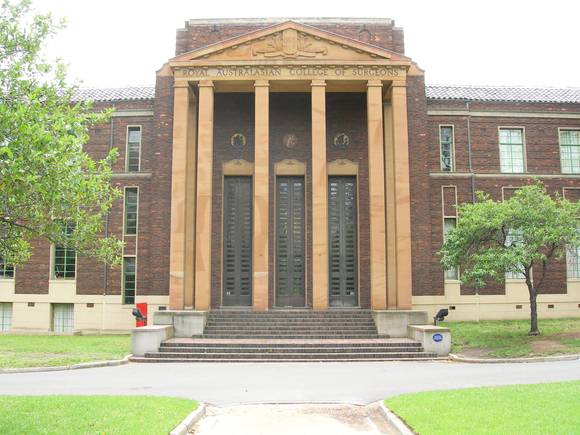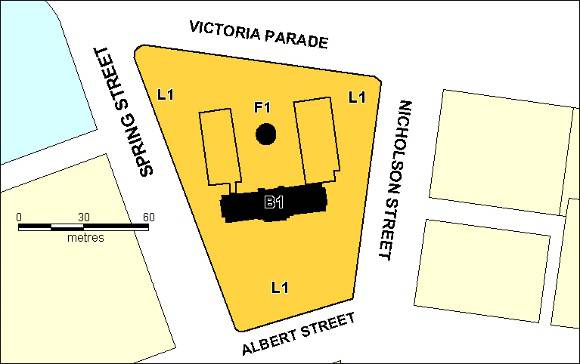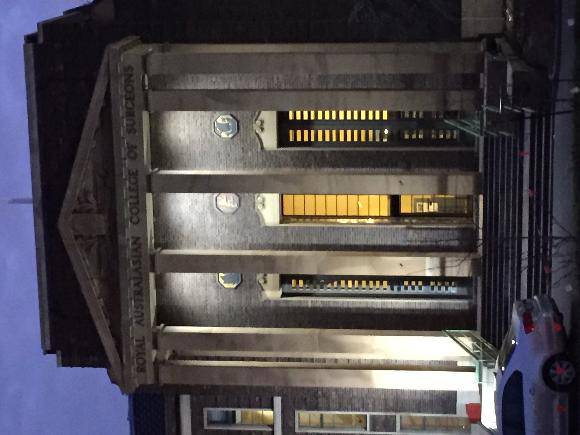| Back to search results » | Back to search page » |
|
ROYAL AUSTRALASIAN COLLEGE OF SURGEONS
Location250-290 SPRING STREET AND 2-40 VICTORIA PARADE MELBOURNE, MELBOURNE CITY
File NumberPL-HE/03/0681LevelRegistered |
|
Statement of Significance
What is significant? Melbourne surgeon, Hugh Devine, was one of the original advocates for
the formation of the Royal Australasian College of Surgeons and he was
instrumental in obtaining the school site in Spring Street for the
erection of their first headquarters in 1934. As founder, a foundation
fellow, a member of council, and president in 1939-41, Devine had
strong links with the college. The College of Surgeons building was designed by architects Irwin and
Stevenson, built by J.C. Taylor and opened in 1935 as the Australasian
headquarters. The building, which provided the first permanent
educational and administrative facilities for the college, was awarded
the Royal Victorian Institute of Architects Street Architecture Medal
in 1937.
[Online Data Upgrade Project 2008]
The Royal Australasian College of Surgeons building is located on
a triangular area of land that was reserved for the National School
Board in 1852. The Model and Training Schools, built between 1854 and
1856, was the first building to occupy the site. It was demolished
after eighty years to allow for the construction of the new college in 1934.
This monumental Greek Revival building is on a prominent site and
is visible from all sides. The building sits on a sandstone plinth and
is constructed of brown bricks set in a Flemish bond with bands of
black header courses. The brickwork has been designed to form subtle
horizontal bands and recessed panels. The windows, with their small
panes and fine architraves, are also formed into vertical panels to
balance the brick work bands. There is a string course at the first
floor level. An elongated pedimented sandstone portico, with square
shaft columns, enhances the unusually tall facade and was the gift of
prominent physician, A E Rowden White.
The college building has had various sympathetic alterations,
including the addition of the east and west wings to the rear in 1963.
The 'Forest Landscape' fountain, by the Australian sculptor Stephen
Walker, was completed in 1969. Cast of bronze and located in the
courtyard, it is composed of a series of organic forms that evoke
growth, plants, rocks and flowing water.
How is it significant?
The Royal Australasian College of Surgeons is of architectural,
historical and archaeological and aesthetic significance to the State
of Victoria.
Why is it significant?
The Royal Australasian College of Surgeons is of architectural
significance as an important example of the civic work undertaken by
the architects Leighton Irwin and Roy Stevenson in a Greek Revival
style, which was adopted for a number of commercial and institutional
buildings in the 1920s and 1930s. The quality of this particular
design was recognised in 1937 by the awarding of the Royal Victorian
Architects' Street Architecture Medal.
The Royal Australasian College of Surgeons is of historical
significance as a building with strong and continuing associations
with this institution. As one of Melbourne's principal institutions,
it has played a long and pivotal role in the development of Victoria's
medical profession.
The Royal Australasian College of Surgeons is of historical
significance for its association with well known Melbourne surgeon Sir
Hugh Devine, and with Sir A E Rowden White, a prominent Melbourne
physician and philanthropist.
The Royal Australasian College of Surgeons is of aesthetic
significance for the sculptural fountain 'Forest Landscape' designed
by Stephen Walker. It is an outstanding and relatively early example
of Walker's work in an organic style, and is his only public
commission in Melbourne.
The Royal Australasian College of Surgeons has archaeological
significance for the below ground archaeological remains of the Model
School built in the 1850s. The remains have a high potential to yield
artefacts and other information about the school and its social history.
Group
Education
Category
School - State (public)








